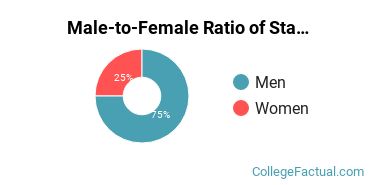 by our College Data Analytics Team
by our College Data Analytics TeamThe main focus area for this major is Statistics. For more details on this concentration, visit its profile page.
Statistics is a major offered under the mathematics and statistics program of study at Tulane University of Louisiana. We’ve pulled together some essential information you should know about the master’s degree program in stats, including how many students graduate each year, the ethnic diversity of these students, whether or not the degree is offered online, and more.
You can jump to any section of this page using the links below:
In 2019-2020, the average part-time graduate tuition at Tulane was $3,167 per credit hour for both in-state and out-of-state students. Information about average full-time graduate student tuition and fees is shown in the table below.
| In State | Out of State | |
|---|---|---|
| Tuition | $59,090 | $59,090 |
| Fees | $2,086 | $2,086 |
Tulane does not offer an online option for its stats master’s degree program at this time. To see if the school offers distance learning options in other areas, visit the Tulane Online Learning page.
Women made up around 50.0% of the stats students who took home a master’s degree in 2019-2020. This is higher than the nationwide number of 46.7%.

None of the stats master’s degree recipients at Tulane in 2019-2020 were awarded to racial-ethnic minorities*.

| Race/Ethnicity | Number of Students |
|---|---|
| Asian | 0 |
| Black or African American | 0 |
| Hispanic or Latino | 0 |
| Native American or Alaska Native | 0 |
| Native Hawaiian or Pacific Islander | 0 |
| White | 0 |
| International Students | 2 |
| Other Races/Ethnicities | 0 |
Statistics students may decide to major in one of the following focus areas.
| Focus Area | Annual Graduates |
|---|---|
| Statistics | 2 |
You may also be interested in one of these majors related to statistics.
| Related Major | Annual Graduates |
|---|---|
| Mathematics | 1 |
| Applied Mathematics | 150 |
*The racial-ethnic minorities count is calculated by taking the total number of students and subtracting white students, international students, and students whose race/ethnicity was unknown. This number is then divided by the total number of students at the school to obtain the racial-ethnic minorities percentage.
More about our data sources and methodologies.